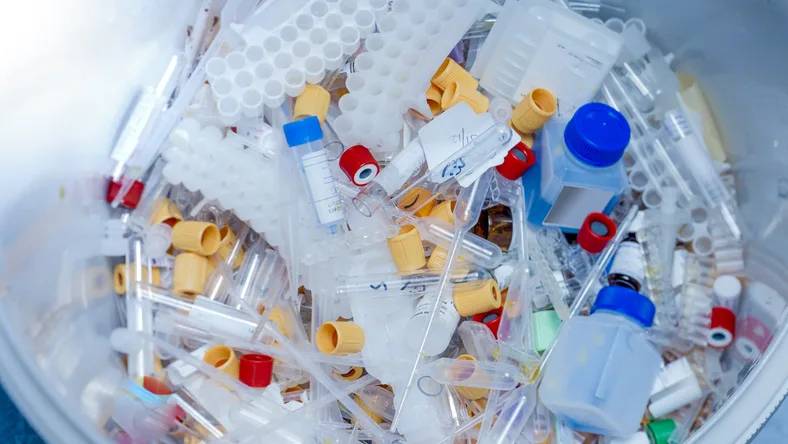
In the Literature
Siegler P, Wiethoelter A, Hufschmid J. Perspectives of vets on plastics in veterinary medicine. Aust Vet J. 2023;101(4):164-173. doi:10.1111/avj.13230
The Research …
Plastic waste from the biomedical sector, including widespread use of disposable, petroleum-based plastic, is an increasingly acknowledged topic of concern. Research and efforts to reduce medical plastic use are largely in human medicine. Although many of the same supplies are used in veterinary medicine, little is known about attitudes regarding these materials in the animal health industry.
In this study, 7 Australian clinicians with various geographic, demographic, and professional backgrounds were interviewed regarding use of disposable plastic in their professional and personal lives. Interviewees generally perceived that an excessive amount of disposable plastic is used in veterinary medicine and noted there are strategies to reduce this waste—although plastic is unlikely to be eliminated entirely.
This study had limited participants, but these results are consistent with reported perspectives of other veterinary professionals concerned about waste management and the environment.1-3 In the United States, a reference committee for the AVMA House of Delegates requested development of sustainability resources for use in the clinic.4 The current study focused on perspectives, but recommended actions broadly align with suggestions from a recent waste audit conducted in both the small animal surgery and anesthesia departments of a large US veterinary teaching hospital.5
… The Takeaways
Key pearls to put into practice:
Improvements in waste management should be approached both in the clinic and by industry leaders. Developing a diverse, in-clinic sustainability team and connecting with local, nonveterinary waste management resources are important first steps. This network can then be extended by identifying like-minded colleagues with whom to share ideas and suggestions. Organizations (eg, Veterinary Sustainability Alliance; see Suggested Reading) are forming to build a community around shared goals, including waste management.
Identifying areas for improvement and prioritizing action should be done through engagement of stakeholders and review of existing data. Conducting a waste audit in the clinic can inform and encourage the sustainability team. Information on how to plan and execute a clinical waste audit is available.5
The environmental footprint of health care is significantly affected by purchased goods and services, making action in the medical supply chain a priority.6 Veterinary staff can share concerns about unnecessary waste with suppliers and purchase goods from companies with transparent and robust sustainability policies when possible. Resources are available to help inform decisions and support desired change (see Suggested Reading).
You are reading 2-Minute Takeaways, a research summary resource presented by Clinician’s Brief. Clinician’s Brief does not conduct primary research.